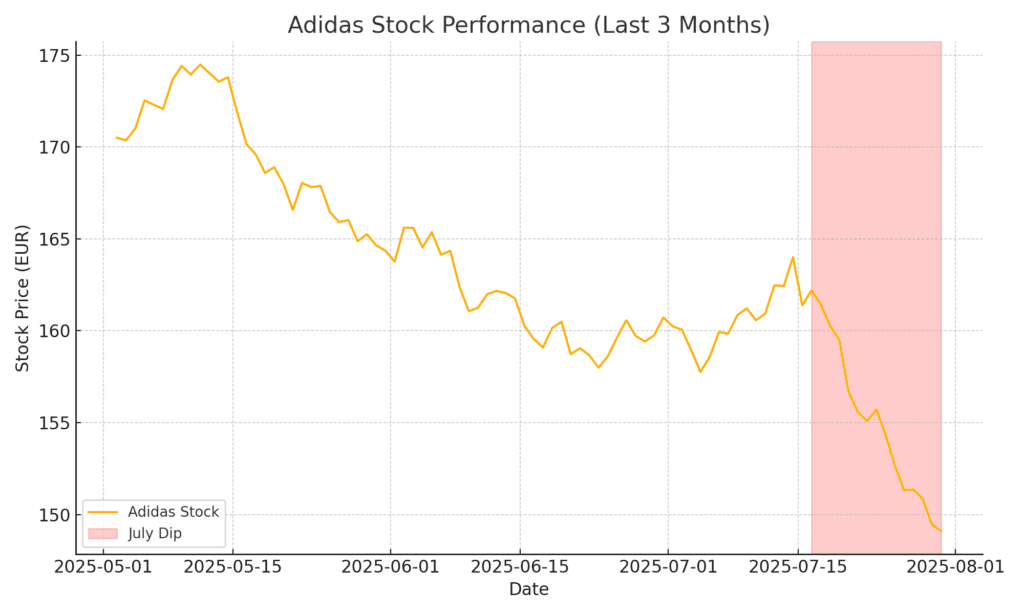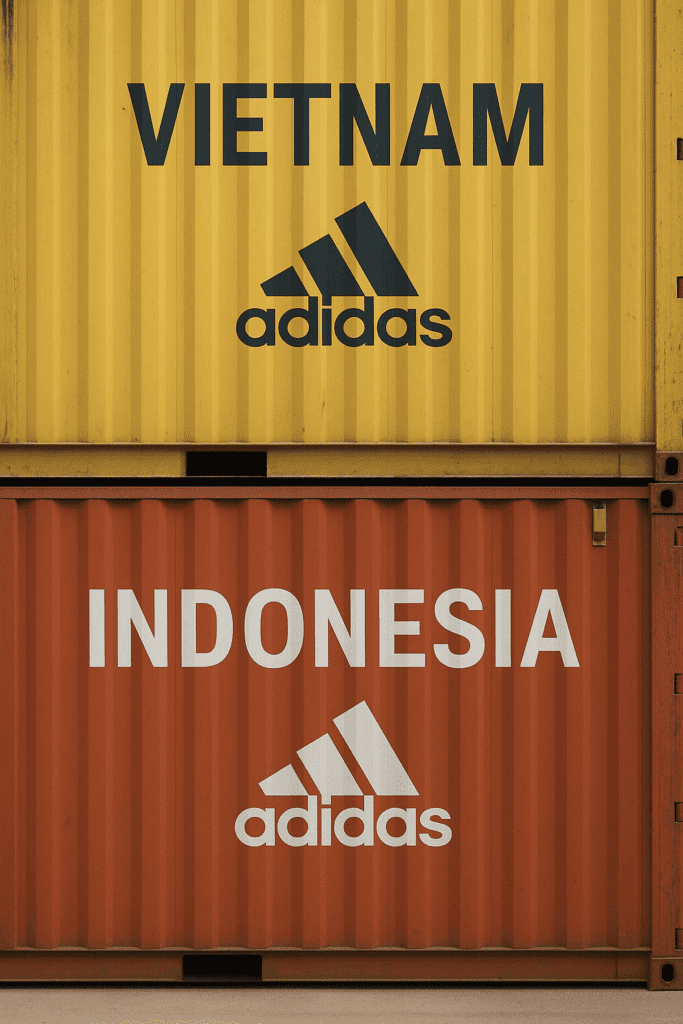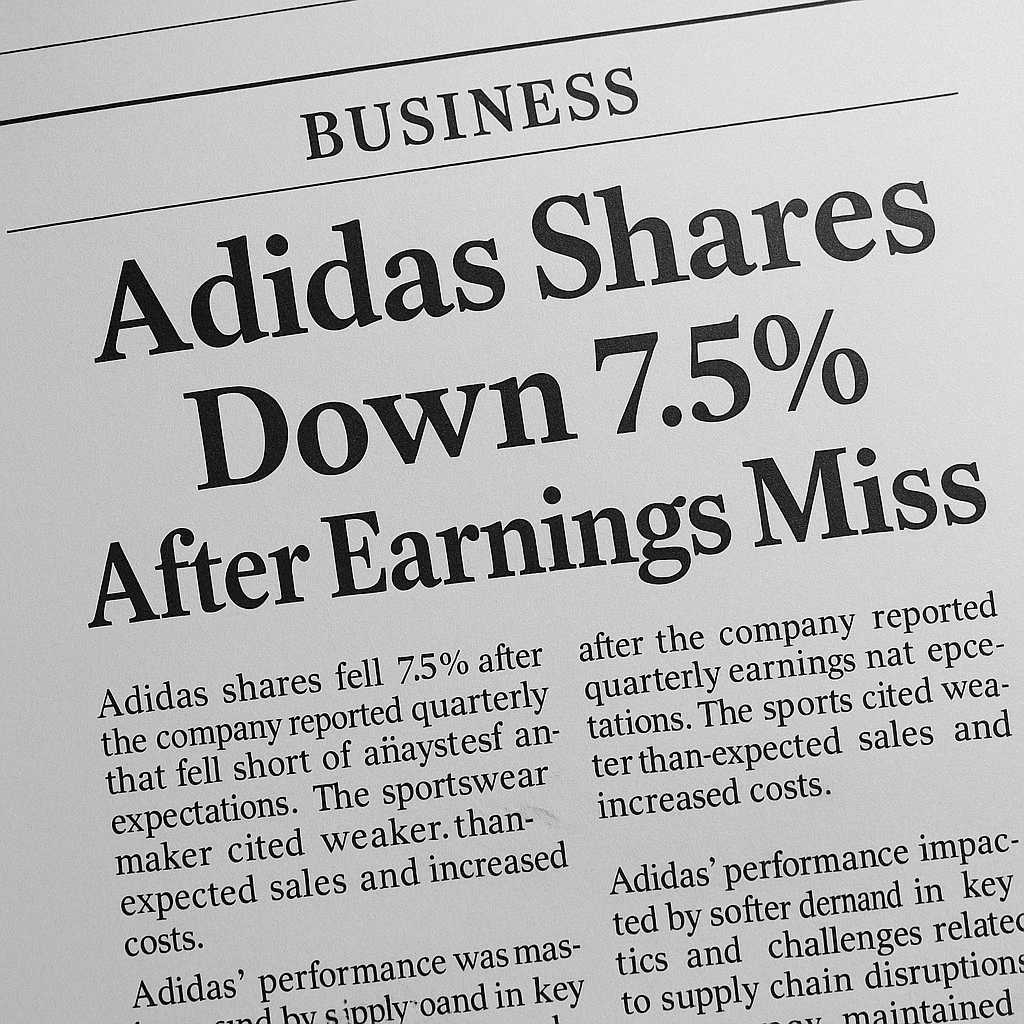Adidas just took a hit—and investors definitely noticed.
Shares dropped 7.5% after the company missed its second-quarter sales target and flagged a massive €200 million tariff bill coming later this year. Yikes.
You’d think strong demand for their trendy Samba and Gazelle shoes would keep things cruising, right? Not this time.
Despite beating profit expectations, Adidas held off on upgrading its outlook. Why? Uncertainty. Between volatile U.S. tariffs, rising inventories, and a weaker dollar, they’re bracing for impact.
So what does this mean for Adidas shares moving forward? And is the hype fading?
Let’s dig into what’s really going on—without the financial jargon—so you can make sense of this big dip.
Table of Contents
What Just Happened to Adidas Shares?
Adidas just took a hit—and investors definitely noticed.
Shares dropped 7.5% after the company missed its second-quarter sales target and flagged a massive €200 million tariff bill coming later this year. Yikes.
You’d think strong demand for their trendy Samba and Gazelle shoes would keep things cruising, right? Not this time.
Despite beating profit expectations, Adidas held off on upgrading its outlook. Why? Uncertainty. Between volatile U.S. tariffs, rising inventories, and a weaker dollar, they’re bracing for impact.
So what does this mean for Adidas shares moving forward? And is the hype fading?
Let’s dig into what’s really going on—without the financial jargon—so you can make sense of this big dip.
A Quick Snapshot: The Numbers That Shook Investors
Here’s a quick breakdown of what triggered the drop:

- Sales rose 2.2% to €5.95 billion, but missed analyst expectations of €6.2 billion.
- Tariff costs in the second half are expected to hit €200 million ($231 million).
- Shares fell 7.5% in early Wednesday trading.
- Inventories jumped 16%, reaching €5.26 billion.
- Operating profit actually beat forecasts at €546 million (vs. expected €520 million).
- But… Adidas held back from updating its annual guidance.
That last one is important.
Even though profits were up, the company didn’t feel confident enough to raise its outlook for the rest of the year.
That’s what spooked investors.
So, Why Didn’t Sales Meet Expectations?
Let’s be real—Adidas has been on fire lately.
Their retro Sambas, Gazelles, and other three-striped kicks have been everywhere. You’ve probably seen them on Instagram, TikTok, and even at your local café.
But the sales growth didn’t keep up with the hype.
A few things dragged it down:
- Currency effects: The strong euro vs. a weaker dollar shaved off roughly €300 million in sales.
- Inventory buildup: To dodge new tariffs, Adidas pushed more products into the U.S. early—leading to a big spike in inventory.
- Tariff anxiety: The looming U.S. import taxes created uncertainty, making it hard to forecast demand.
So while the brand is still trending, the financials aren’t keeping pace.
The Tariff Trouble: A $231 Million Problem
Let’s talk tariffs.
The U.S. recently dropped a 20% levy on Vietnamese exports and 19% on Indonesian goods.
And guess what? Acccording to Reuters:
- 27% of Adidas products come from Vietnam.
- 19% come from Indonesia.
That’s nearly half of their production hit with new taxes.

Adidas has been scrambling to stay ahead of it—buying and shipping products early to beat the deadline. But that only solves part of the problem. Higher costs are coming either way.
CEO Bjorn Gulden put it plainly: “We still don’t know what the final tariffs in the U.S. will be.” And that kind of uncertainty makes it really hard to plan.
Why Investors Got Spooked
From the outside, things might not look so bad. Profits beat expectations. Margins held strong. Sales weren’t awful—just a little off.
But investors are all about momentum and predictability. And right now, Adidas is lacking both.
- No guidance upgrade means they’re not confident about the second half.
- Tariff and currency risks are very real.
- Inventory concerns could turn into discounting problems if demand slows.
UBS even mentioned that Adidas needs to reassure investors with a solid plan for H2 and early 2026. Until then, some folks are choosing to cash out.
Is the Sneaker Buzz Starting to Fade?
Here’s a thought: are people getting tired of Sambas and Gazelles?
Maybe not entirely. But trends move fast.
Just like skinny jeans gave way to wide-leg pants, sneaker styles come and go. Adidas has been winning lately thanks to nostalgia, but that can’t carry the brand forever.
And if consumer spending slows—especially with inflation in the mix—those €120 sneakers might not fly off shelves like they did in early 2025.
Adidas knows this. That’s why they’re not throwing out big promises for the second half.
They’re cautious. And right now, so are investors.
What This Means for You (If You’re Watching Adidas Shares)
If you’re holding or eyeing Adidas stock, here are a few things to keep in mind:
- Short-term volatility is likely. Tariff news could move the stock quickly—up or down.
- Q3 results will be crucial. Investors will look for signs of recovery or deeper trouble.
- Inventory management needs to be watched. If Adidas starts discounting heavily, margins could suffer.
- Global demand trends matter. Inflation, especially in the U.S., could impact sneaker sales.
The good news? Adidas is still a strong brand with high recognition and loyal fans. But the stock might have to earn back investor trust before climbing again.
What’s Next for Adidas?
Adidas has a few choices moving forward.
- Rebalance supply chains: They may shift production away from high-tariff countries like Vietnam and Indonesia. But that takes time.
- Boost direct-to-consumer sales: More control, higher margins.
- Watch their trend cycle: If the Samba wave dies out, they’ll need another hit product soon.
- Manage expectations carefully: Investors are watching for transparency and reassurance.
Bjorn Gulden and the exec team know this is a turning point. Whether it’s a speed bump or something bigger depends on how they respond now.
Final Thoughts: A Wake-Up Call, Not a Collapse
Adidas isn’t in trouble. But the market’s reminding them (and us) that even popular brands can stumble when macro factors pile up.
The 7.5% drop in Adidas shares stung, but it doesn’t erase their recent wins. It just highlights how sensitive global businesses are to things like trade policies and currency swings.
If you’re an investor, this is your cue to stay sharp. If you’re a fan of the brand, keep rocking those Sambas—but maybe wait for a sale.
And if you’re just curious about how big companies react under pressure, this Adidas moment is a great case study.
Let’s see what they do next.
You can read more about what to expect in the stock market here.



